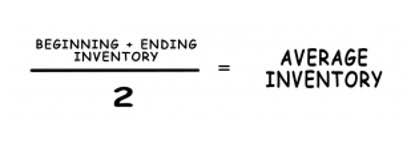LÀM BIỂN QUẢNG CÁO
- Home Unlocking the Secrets of LIFO Reserve in Inventory Accounting
Unlocking the Secrets of LIFO Reserve in Inventory Accounting

On the balance sheet, the LIFO reserve amount is generally shown as a contra account that reduces inventory. It indicates that the reported inventory value would be higher if not for the use of LIFO. To compute the FIFO amount of cost of goods sold of company A, the change in the LIFO reserve account during the Bookstime period (LIFO effect) would be subtracted from the LIFO amount of the cost of goods sold of company A. The entry effectively increases the cost of goods sold, as under the LIFO method the most recent (and therefore higher cost) items sell first. Consequently it follows that as the change in inventory is a component of the cost of goods sold, the other side of the double entry posting is to the cost of goods sold account. If the LIFO reserve is depleted, it means that the company has used up all its LIFO reserves and will now have to use the FIFO method to value its inventory.
Accounting Adjustments

This method is quite popular in the United States and is allowed under US GAAP (LIFO Method is prohibited under IFRS). Companies opting for the LIFO method of Inventory are required to disclose Last in First Out Reserve in the footnotes of their financial statements. US GAAP requires that all companies that use LIFO to also report a LIFO reserve. This reserve is mainly used for taxation purpose in US because it allows companies to defer the tax payments as mentioned above. However, tis concept is limited to the US mainly because the LIFO metgod is allowed only as per the Generally Accepted Accounting Principles (GAAP). The LIFO accounting is not allowed by the International Financial Reporting Standard (IFRS), thereby making the rules of accounting different based on the method followed by the particular country.

Transparent Disclosure of LIFO Reserve in Reports
- During LIFO liquidation, the reserve must be adjusted downward to reflect the decrease in old inventory layers.
- Usually, a declining LIFO reserve indicates LIFO liquidation, which happens when a company sells more inventory than it purchases during inflationary periods.
- As we know inventory cost under FIFO is higher than cost under LIFO method that is why in the formula above FIFO cost is sum of LIFO reserve and LIFO cost.
- We’re a headhunter agency that connects US businesses with elite LATAM professionals who integrate seamlessly as remote team members — aligned to US time zones, cutting overhead by 70%.
- In a persistently deflationary environment, the LIFO reserve can have a negative balance, which is caused by the LIFO inventory valuation being higher than its FIFO valuation.
- This $200,000 bridges the gap between the two valuation methods on the balance sheet.
A company using a non-LIFO method would deduct the LIFO reserve (allowance to reduce inventory to LIFO) from the inventory if it needs to state the inventory on LIFO basis. It is important to realize that the LIFO reserve is sometimes referred to as excess of FIFO over LIFO cost, LIFO allowance, or revaluation to LIFO. Throughout this article, we’ve talked about many benefits and reasons why calculating the LIFO Reserve helps balance sheet companies. Think of it as translating from one inventory language to another so everyone can understand each other’s numbers better. The question provides LIFO reserves data for Company B, so it must be using the LIFO method to value its inventories.
Advance Your Accounting and Bookkeeping Career

Chartered accountant Michael Brown is the founder and CEO of Double Entry Bookkeeping. He has worked as an accountant and consultant for more than 25 years and has built financial models for all types of industries. He has been the CFO or controller of both small and medium sized companies and has run small businesses of his own. He has been a manager and an auditor with Deloitte, a big 4 accountancy firm, and holds a degree from Loughborough University. Using the LIFO method the two units sold are the last in, which in this example are part of the purchases for the period.
Why Trust Carbon Collective
Since LIFO tends to understate the value of ending inventory and overstate COGS compared to FIFO, the LIFO reserve shows the amount costs are understated. The LIFO lifo reserve journal entry method is one of the available methods used in inventory management. Clearly the method used to determine which units are sold and which remain in ending inventory determines the value of the cost of goods sold and the ending inventory. As profit depends on the cost of goods sold, the method chosen will affect the profits of a business. This LIFO reserve represents the additional inventory value that would have been reported if the company had used FIFO instead of LIFO. It also indicates the amount of deferred taxable income due to using the LIFO method.
- This is because the LIFO method tends to understate ending inventory on the balance sheet by valuing it at older, lower historical costs rather than current replacement costs.
- The constant increase in cost can create a credit balance in the LIFO reserve, which results in reduced inventory costs when reported on the balance sheet.
- US GAAP requires that all companies that use LIFO to also report a LIFO reserve.
- This article will help you understand the concept of LIFO Reserve, its formula, and its implications.
- It reflects the amount by which inventory is undervalued relative to actual price levels.
- The current ratios of both companies cannot be compared due to this difference in reporting.




